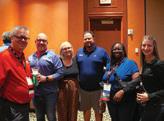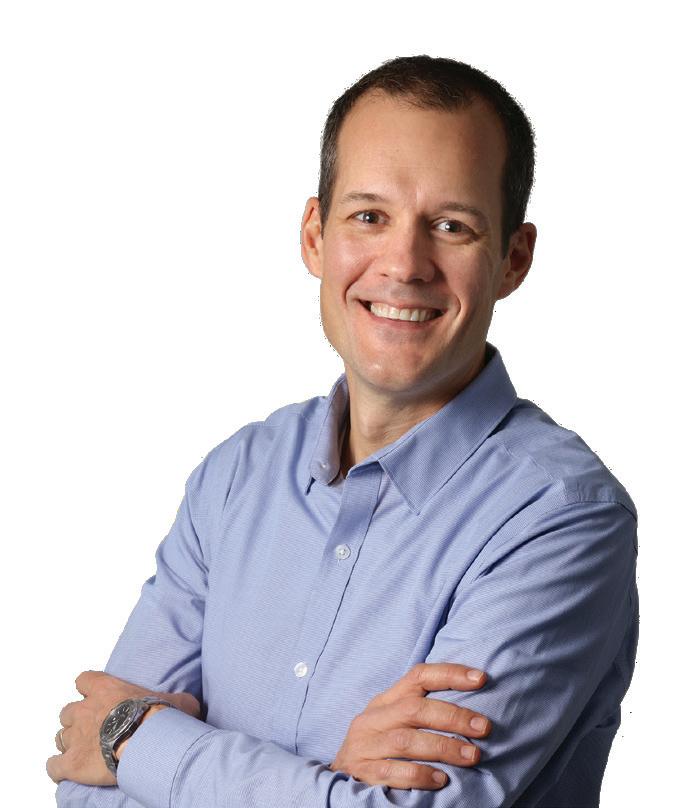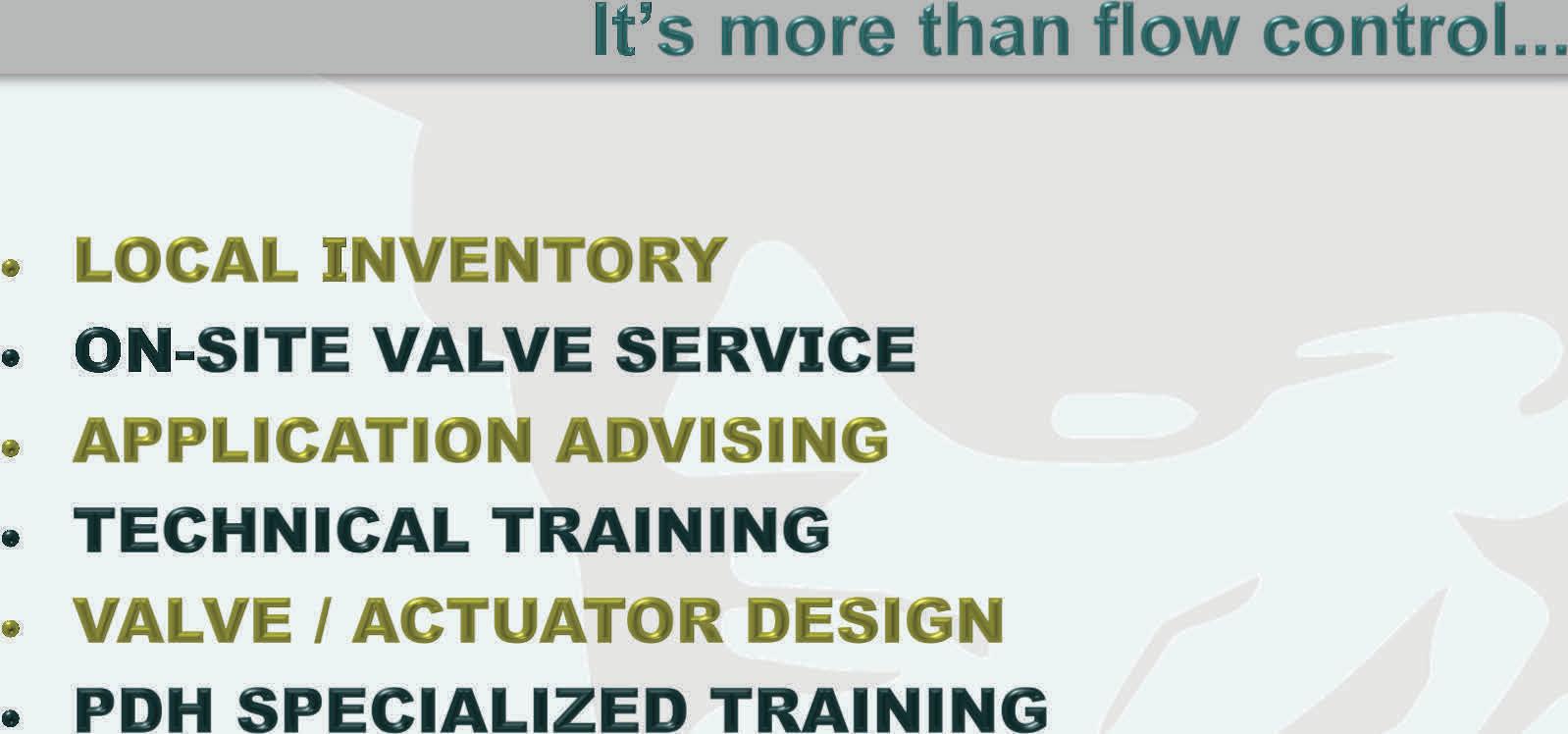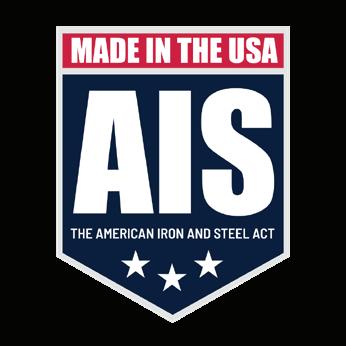the splash


MAY 19-21, 2025 |








MAY 19-21, 2025 |





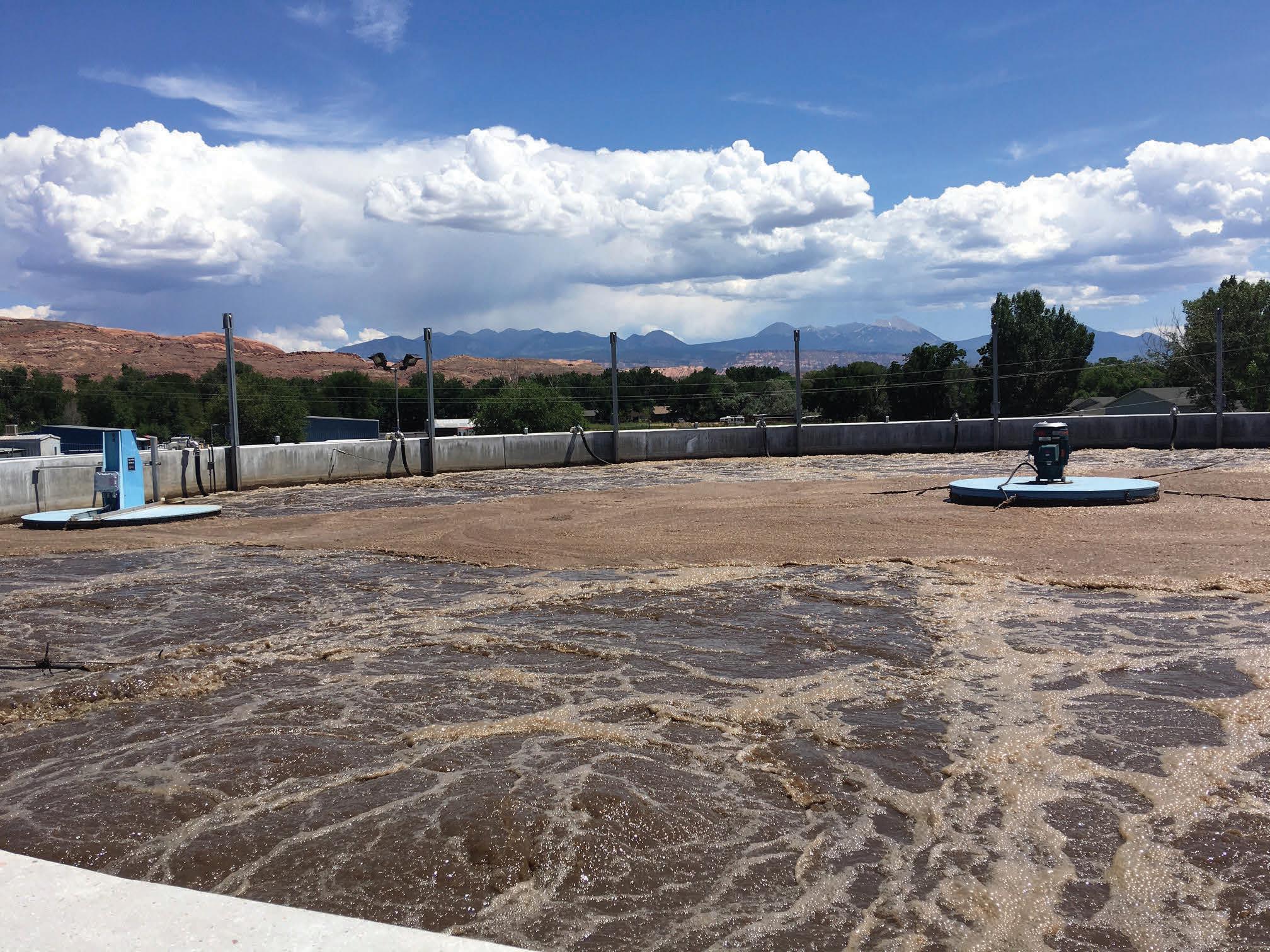




Biological nitrogen and phosphorus removal can be a challenge for wastewater plants as effluent objectives change due to new or future permits. Since the mid-1980s, the AquaSBR® sequencing batch reactor has achieved efficient, cost-effective nutrient removal with more than 1,200 installations, worldwide.
True batch operation and time adjustment flexibility allow plants to easily achieve low Total Nitrogen less than 3.0 mg/l and Total Phosphorus less than 0.5 mg/l with reduced chemicals and power compared to other activated sludge systems.
ADVANTAGES OF THE TECHNOLOGY:
• Independent aeration and mixing with the Aqua MixAir® system
• Lowest cost of ownership
• Remote 24/7 process support All components are accessible from the side of the basin for ease of maintenance.
• Modular system is ideal for small or large flows



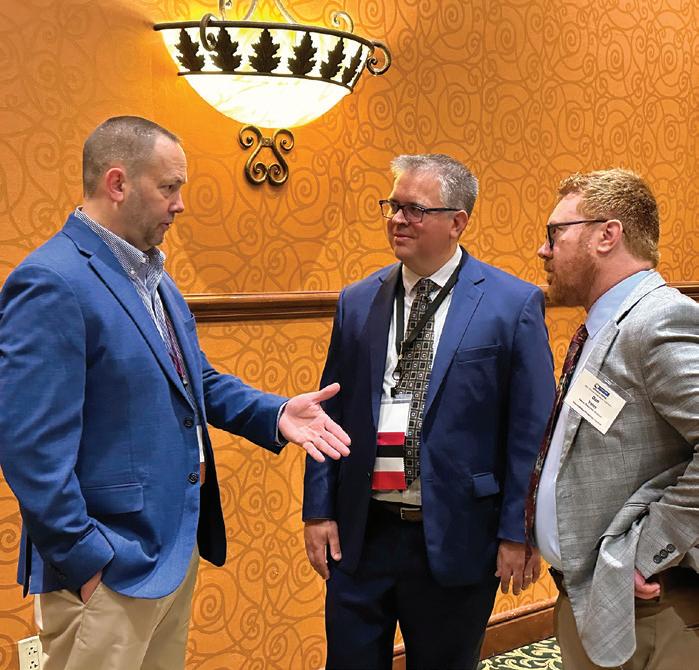


ENGINEERING
Water/Wastewater
Groundwater Systems
Civil/Electrical/I&C
Hydraulic Modeling/Master Planning
Value Engineering
DESIGN
New Construction
Refit/Rehabilitation
Assessments/Studies
PROJECT/ CONSTRUCTION MANAGEMENT Inspection Design Build Services
MUNICIPAL,
AND PRIVATE SERVICES



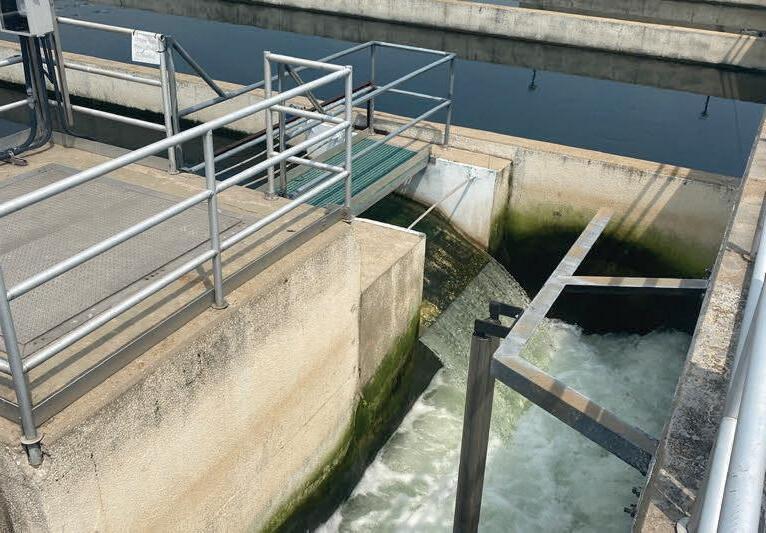
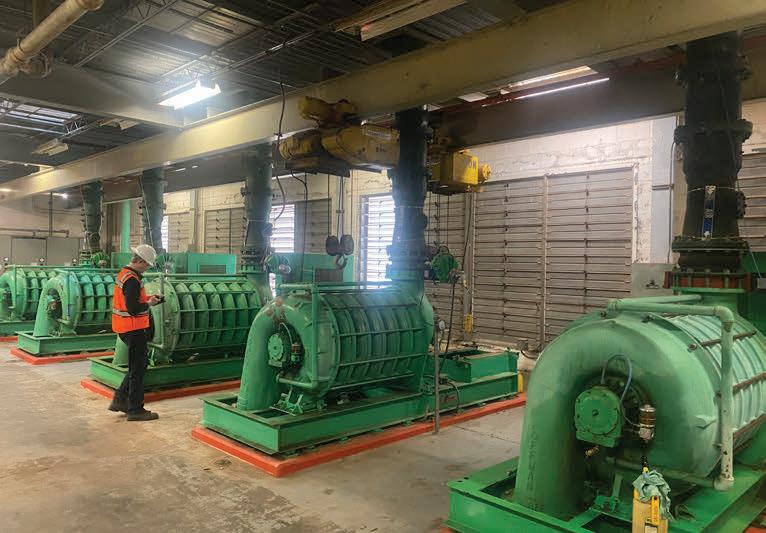
Ihope everyone had a great holiday season and is easing back into the routine. We are excited to kick off 2025 with several events that will be opportunities to share knowledge, celebrate accomplishments, and bring together our water community!
In January, we hosted our first annual OWEA Awards Luncheon –an event we have eagerly anticipated. Thanks to our Awards Committee, who has worked diligently on this event for months, we had a successful event at the Will Rogers Theater in Oklahoma City. We had a great turnout, and our awards chairs put together a full recap later in this issue with more details about what awards were given out and who our winners were. I am so appreciative of all the time this committee has spent organizing this luncheon together. I want to congratulate all of our awardees and thank everyone who attended. It is such an exciting time to see us growing as an organization and to be able to celebrate these achievements together.
Next up, we are hosting a WEFMAX, it will be in Oklahoma City on April 2-4. This event will bring together member associations from across the country, providing an opportunity to exchange ideas, share best practices, and build connections. It’s also a chance to highlight Oklahoma’s unique culture and show off what makes our state so special. Our WEFMAX Committee is working hard to ensure that this is a meaningful experience for everyone, and will leave attendees inspired and eager to bring new ideas back to their communities.
We also have the APWA/OWEA Annual Conference which will be held in Norman on May 19-21. The Conference Planning Committee is reviewing the abstracts submitted for the technical sessions and we will be notifying presenters soon. Our conference planning chair has put an update for you on this issue. This conference is always a fantastic opportunity for learning, sharing, and networking with others in the water, wastewater, and public works sectors. I’m looking forward to seeing what innovations and ideas will emerge this year!
As we move forward into 2025, I am excited about the opportunities these events will provide to connect, collaborate, and learn from one another. It is truly inspiring to see the
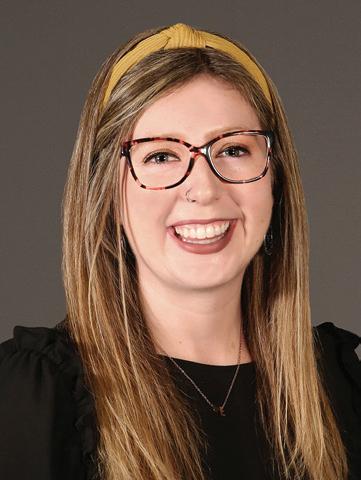
dedication and passion of our members, and I look forward to all we will accomplish together this year. If you have any questions or would like to get more involved, please don’t hesitate to reach out to us. Here’s to a successful and fulfilling year ahead for OWEA and our entire water community!

As a proud Oklahoma native and water engineering expert, Cole Niblett is dedicated to ensuring a brighter future for his home state. By enhancing water treatment facilities and implementing cuttingedge technologies, he is transforming communities throughout the region, providing safe and reliable water to residents.
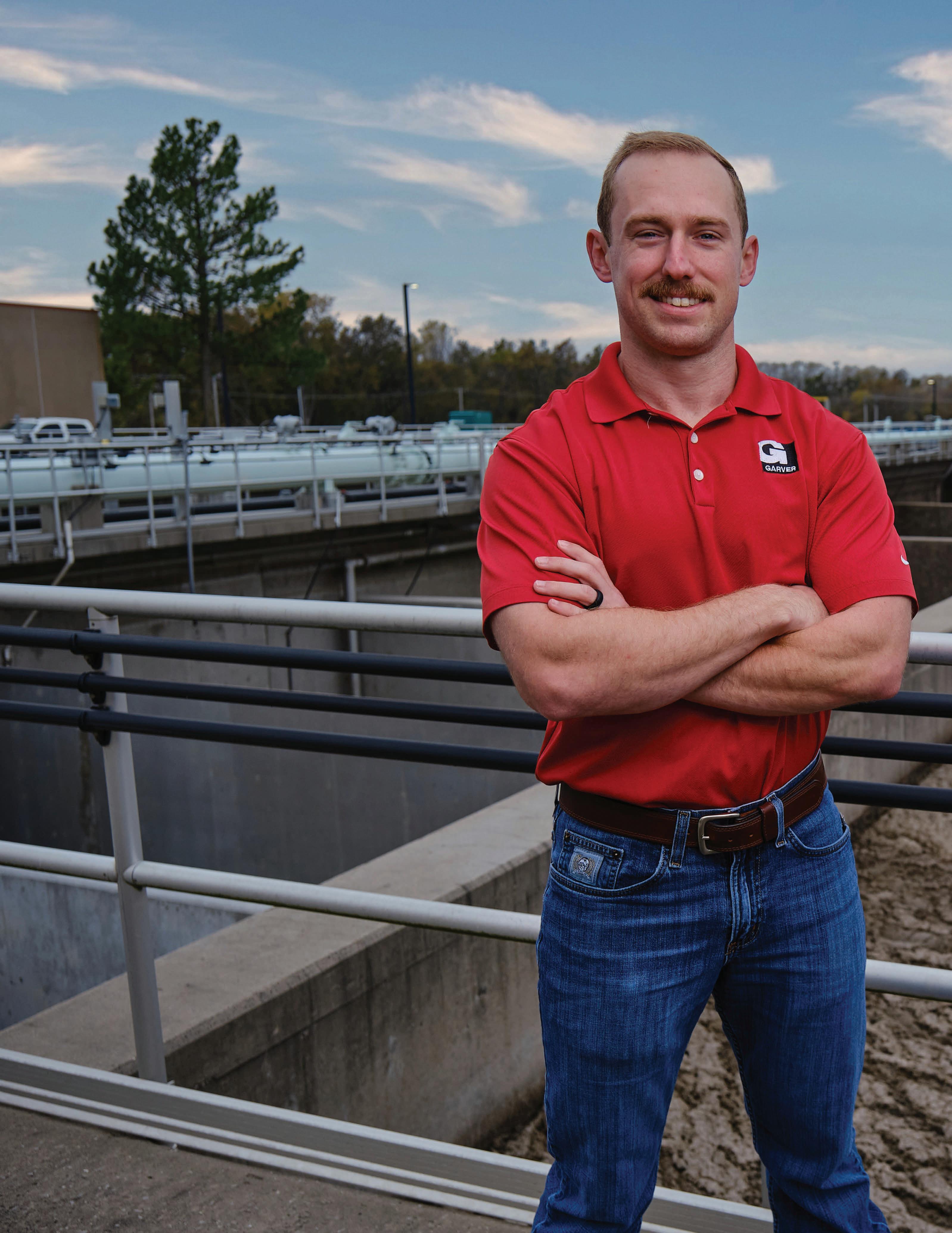
Cole Niblett, PE | Oklahoma Water Team Leader Named one of Oklahoma Magazine’s 40 Under 40 GarverUSA.com
The Oklahoma legislative session is scheduled to convene on February 3 and adjourn on May 30. State-level upcoming legislation: Oklahoma Senate Bill 3 proposes to establish a moratorium on permitting and land application of sludge and biosolid material and Senate Bill 268 requires DEQ to complete a study and report to the Governor and Legislature related to biosolids and septage land application by February 2026. There is ongoing discussion about another bill that proposes moving the monitoring program from OWRB to DEQ. It is not yet clear if this bill will be introduced in this session. Lastly, DEQ’s Budget Request will include a request to fund a new Lead and Copper Section, which will administer the new federal lead and copper rules in Oklahoma, and assist Oklahoma’s public water supply systems in meeting these new federal requirements.
“ There is ongoing discussion about another bill that proposes moving the monitoring program from OWRB to DEQ. It is not yet clear if this bill will be introduced in this session.
On the national level, EPA has released a final report summarizing the October 2023 to May 2024 workshops related to PFAS in biosolids. EPA also indicated that they planned to release a Biosolids Risk Assessment Study, but as of January 6, 2025, this study has not yet been released. EPA has proposed the Clean Water Act Methods Update Rule, which officially adds methods 1633A (for 40 PFAS), 1621 (adsorbable organic fluorine), and 1628 (209 PCB congeners) to 40 CFR Part 136 for use in NPDES permits. Comments were due mid-January. EPA has issued the final NPDES 2026 Pesticide General Permit (PGP), which will take effect on October 31, 2026, when the current 2021 PGP expires. EPA has also issued a Proposed 2026 Multi-Sector General Permit (MSGP), with public comments due February 11, 2025. This permit is
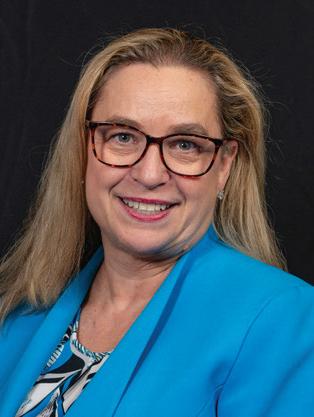
sometimes referred to as the Industrial Stormwater permit. Additionally, EPA released Preliminary Effluent Guidelines Program Plan 16 for public comment, due January 17, 2025. Plan 16 outlines new studies and data collection related to PFAS, and focuses on the extent and nature of PFAS discharges. Along those lines, EPA’s POTW Influent Study is expected to commence in 2025. The Water Affordability Needs Assessment Report has been published and is available here: www.epa.gov/system/files/ documents/2024-12/water-affordability-needs-assessment.pdf.

June 3, 2025 8 a.m. to 5 p.m.
Marriott Tulsa Hotel —Southern Hills, 1902 E. 71st St., Tulsa, OK 74136
Separate tracks for water and wastewater courses. Includes classroom and field training.
6 to 8 Operator Certification hours - ODEQ Approved.
6 to 8 Professional Development hours.
Cost: $25 per attendee (Lunch included).
Registration will open April 1, 2025 at www.owea.org.
For more information, contact Josh at jmuskopf@carollo.com.



OWEA has granted four (4) scholarships for the 2024/25 school year.
Congratulations to Pratiti Navum, ORU; Maxine Mhende, ORU; Jacob Farnell, ORU; and Cameron Glen, OSU.
OWEA provides college scholarships of $1,000/school year and unlike many
scholarships, the check is sent directly to the student. Scholarships are awarded to full-time students with career goals aligned to the OWEA vision of striving to preserve and enhance the water environment of Oklahoma, America’s heartland. OWEA offers scholarships to its members and their dependents.
WEF/OWEA Student memberships are only $25.
For full details visit the OWEA website at www.owea.org or contact Tom Krueger, Scholarship Committee Chair, at asktomk@gmail.com.
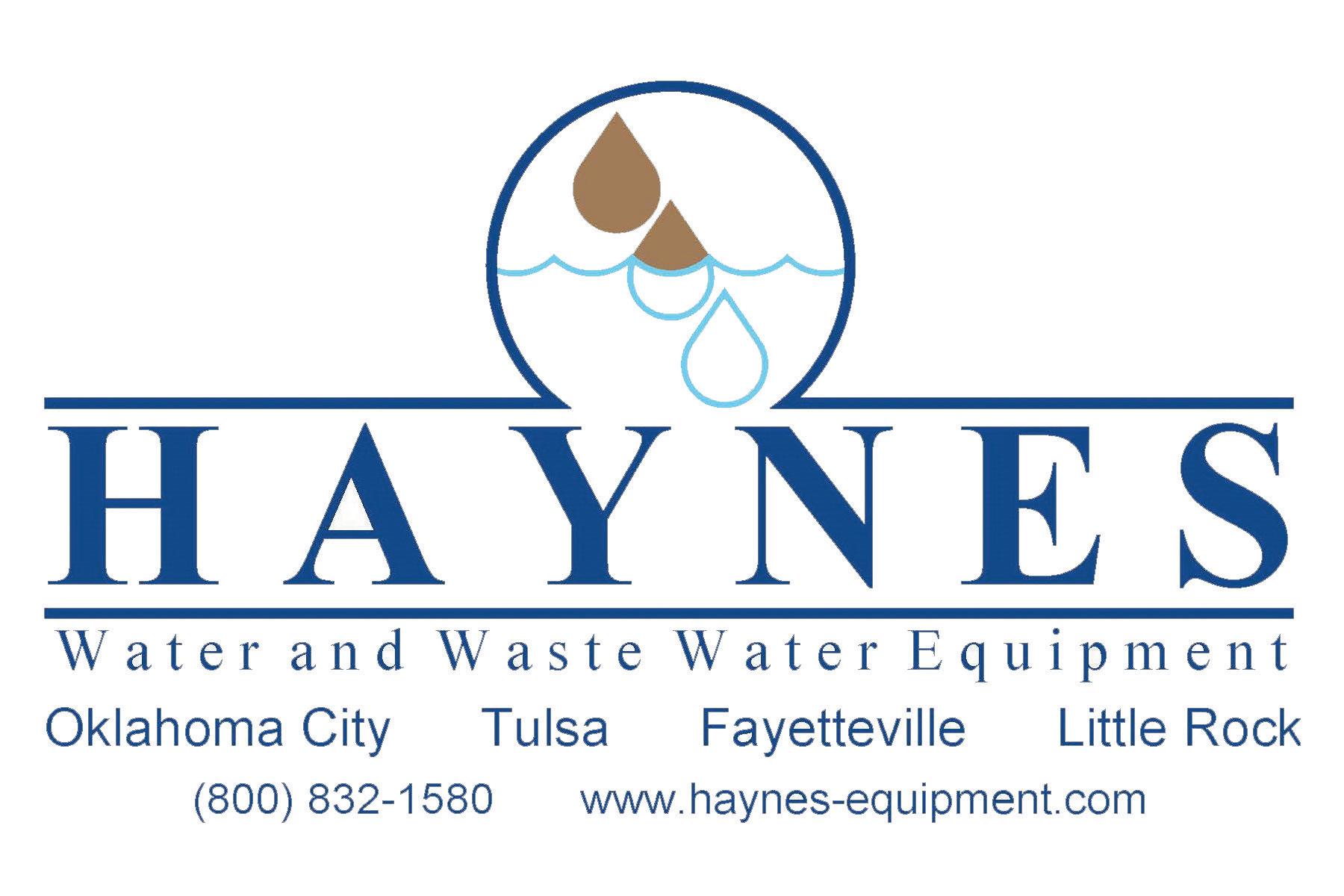

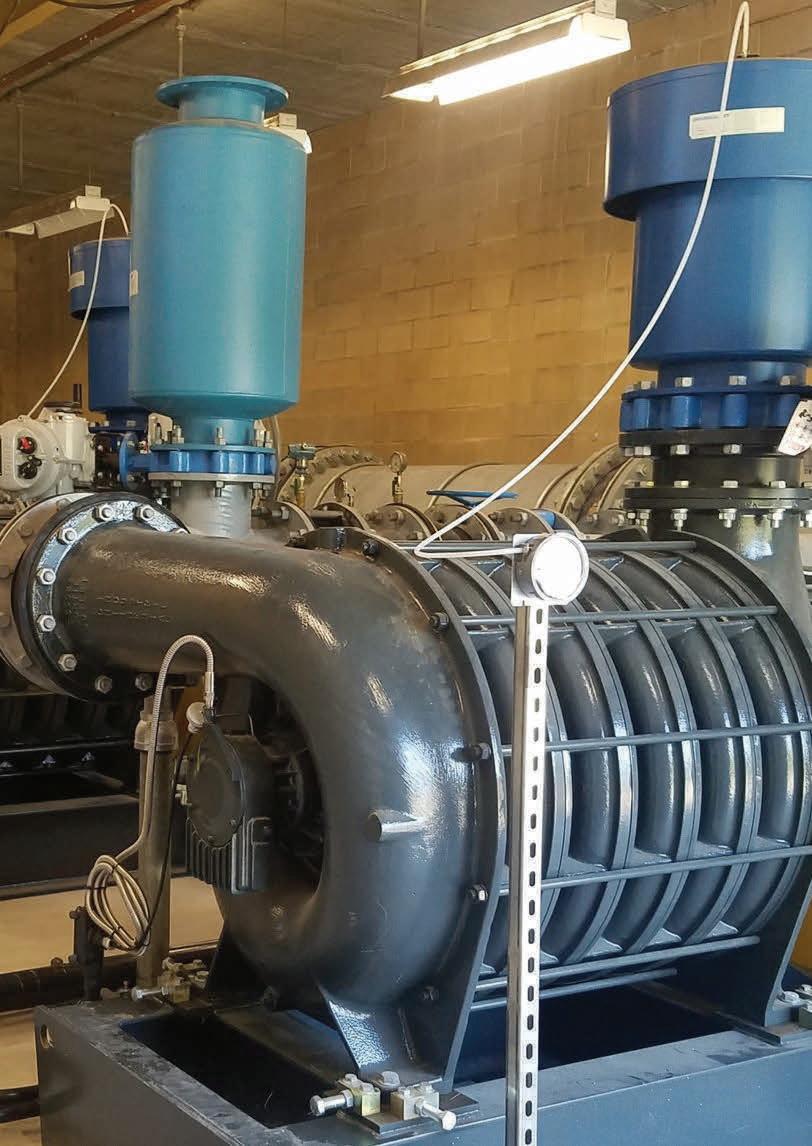

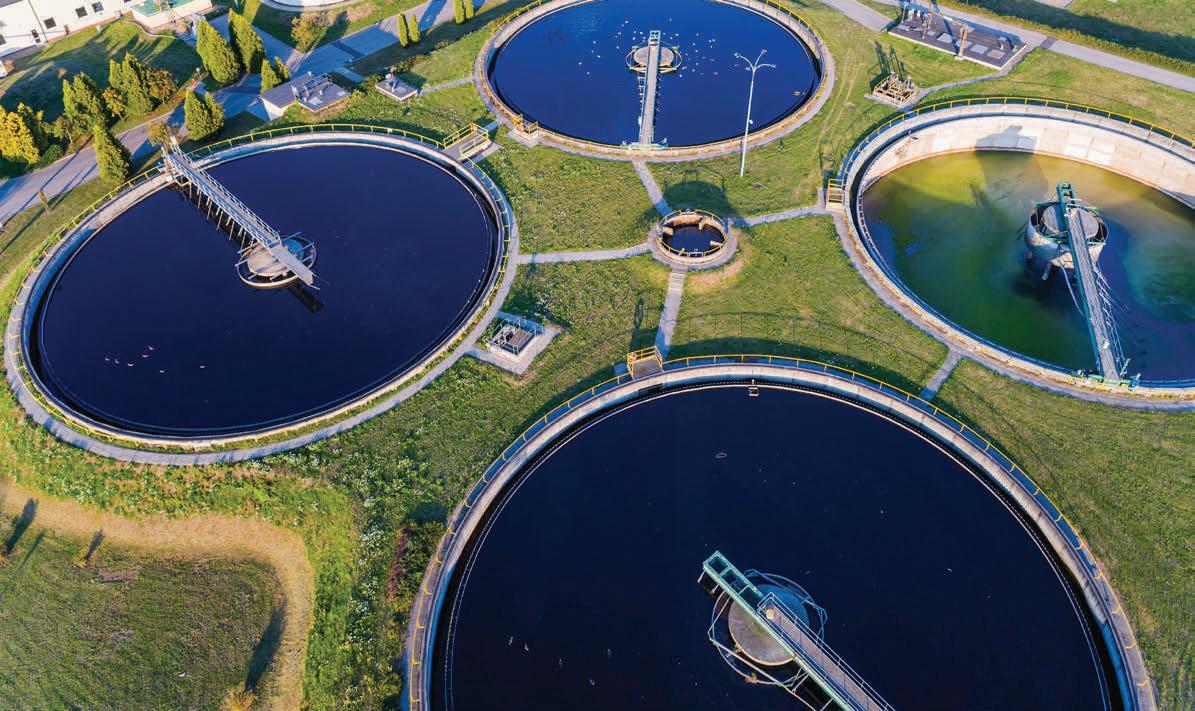

Embassy Suites Conference Center Norman, OK May 19-21, 2025
Embassy Suites Conference Center Norman, OK May 19-21, 2025
Save the date for the Annual APWAOK/OWEA Conference, Trade Show, and Golf Tournament. The American Public Works Association Oklahoma Chapter and the Oklahoma Water Environment Association are combining again to create a professional conference experience for participants, exhibitors, and sponsors. You will reach professionals from all areas of public service, including engineering design and Public Works management, eet management, street maintenance, and water/wastewater operations. Private sector consultants, county commissioners, utility department managers, and tribal personnel are also invited to a end this conference. Conference registration is expected to open in April.
Save the date for the Annual APWAOK/OWEA Conference, Trade Show, and Golf Tournament. The American Public Works Association Oklahoma Chapter and the Oklahoma Water Environment Association are combining again to create a professional conference experience for participants, exhibitors, and sponsors. You will reach professionals from all areas of public service, including engineering design and Public Works management, eet management, street maintenance, and water/wastewater operations. Private sector consultants, county commissioners, utility department managers, and tribal personnel are also invited to a end this conference. Conference registration is expected to open in April.
APWA Oklahoma Chapter
Devin Randall, Vice President (918)380-8868
APWA Oklahoma Chapter
Devin Randall, Vice President (918)380-8868



OWEA
Amber Wooten , Associate Vice President (918)822-4869
OWEA
AWooten@carollo.com
Amber Wooten , Associate Vice President (918)822-4869
AWooten@carollo.com




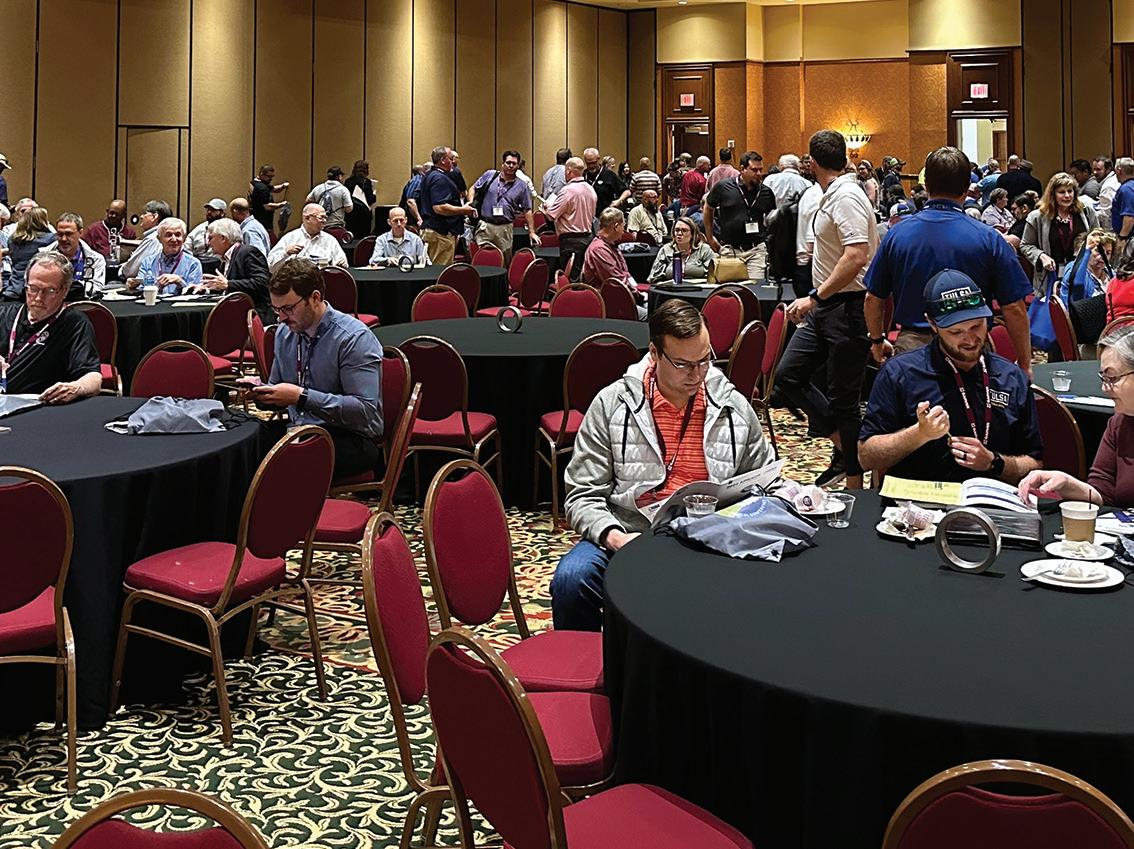
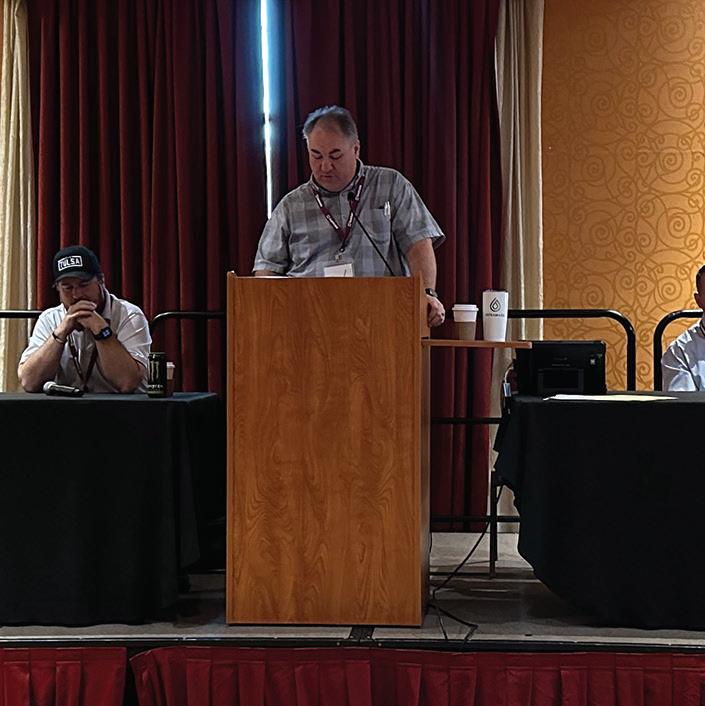

It is never too early to starting planning for the 2025 APWA | OWEA Joint Technical Conference & Tradeshow! The Conference Planning Committee has already been busy looking for ways to make the event better than ever.

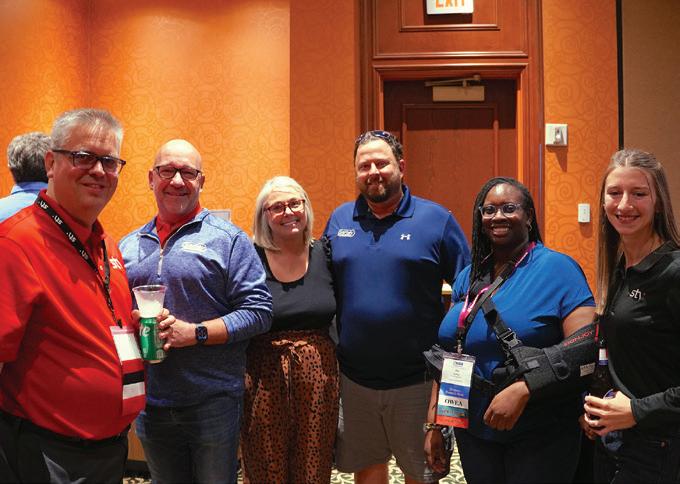

MAY 19-21, 2025 | EMBASSY SUITES

Amber Wooten, OWEA President Elect and Conference Planning Committee Chair
John Bannen, OWEA 5S Society and Technical/Training Committee Chair
The conference will be May 19-21, 2025 at Embassy Suites in Norman. On Monday, May 19, make plans to play golf at the Westwood Golf Course or demonstrate your skills at the ROADeo. Westwood is one of Oklahoma’s premier public courses. The 6,200-yard course was recently renovated and features wide, tree-lined fairways and gently contoured greens, 20 traps and several water hazards. The challenging, yet playable course, is perfect for the weekend golfer or the advanced competition. At the ROADeo, participants test their skills by maneuvering machinery through specific obstacle courses and demonstrate what it takes to perform the daily internal operations of the Public Works Departments throughout the state. The winners of the event then go to compete at the national level. End the evening with a social event sponsored by Hartwell and EI2
Technical sessions on Tuesday and Wednesday (May 20-21) will provide participants with the opportunity to earn up to 10 professional development training hours. The committee is developing the session content but expect sessions covering wastewater, water, stormwater, sustainability, planning, regulatory news, transportation, leadership, cybersecurity, and many other relevant topics.
Special events happening during the conference include the Water Taste Contest, Water’s Worth It silent auction, Women
in Water happy hour, the OWEA Business Meeting, and for the first time in Oklahoma we are having an Operations Challenge (see page 15).
Contact Cameryn Edwards at cameryn.edwards@stvinc.com if you are interested in providing a donation for the Water’s Worth It silent auction. Money raised from past auctions has provided water related books to school children, sponsored Discovery Labs (Tulsa), Introduce a Girl to Engineering activities, and other outreach endeavors.
Contact Michael Taylor at michael@cowangroup.co if you would like information on the Water Taste Contest. The Oklahoma winner will compete against the Arkansas and Louisiana winners at the Southwest Section AWWA (swawwa.org) for the opportunity to compete at the national taste contest held at ACE (ace.awwa.org).
Reach out to Amber Wooten at awooten@carollo.com if you are interested in serving as a session moderator or have other questions about the conference.
Sponsorship and conference registration are anticipated to open in early April. Set a reminder so that you don’t miss out. We can’t wait to see you in Norman!
Sponsorship and conference registration are anticipated to open in early April. Set a reminder so that you don’t miss out. We can’t wait to see you in Norman!
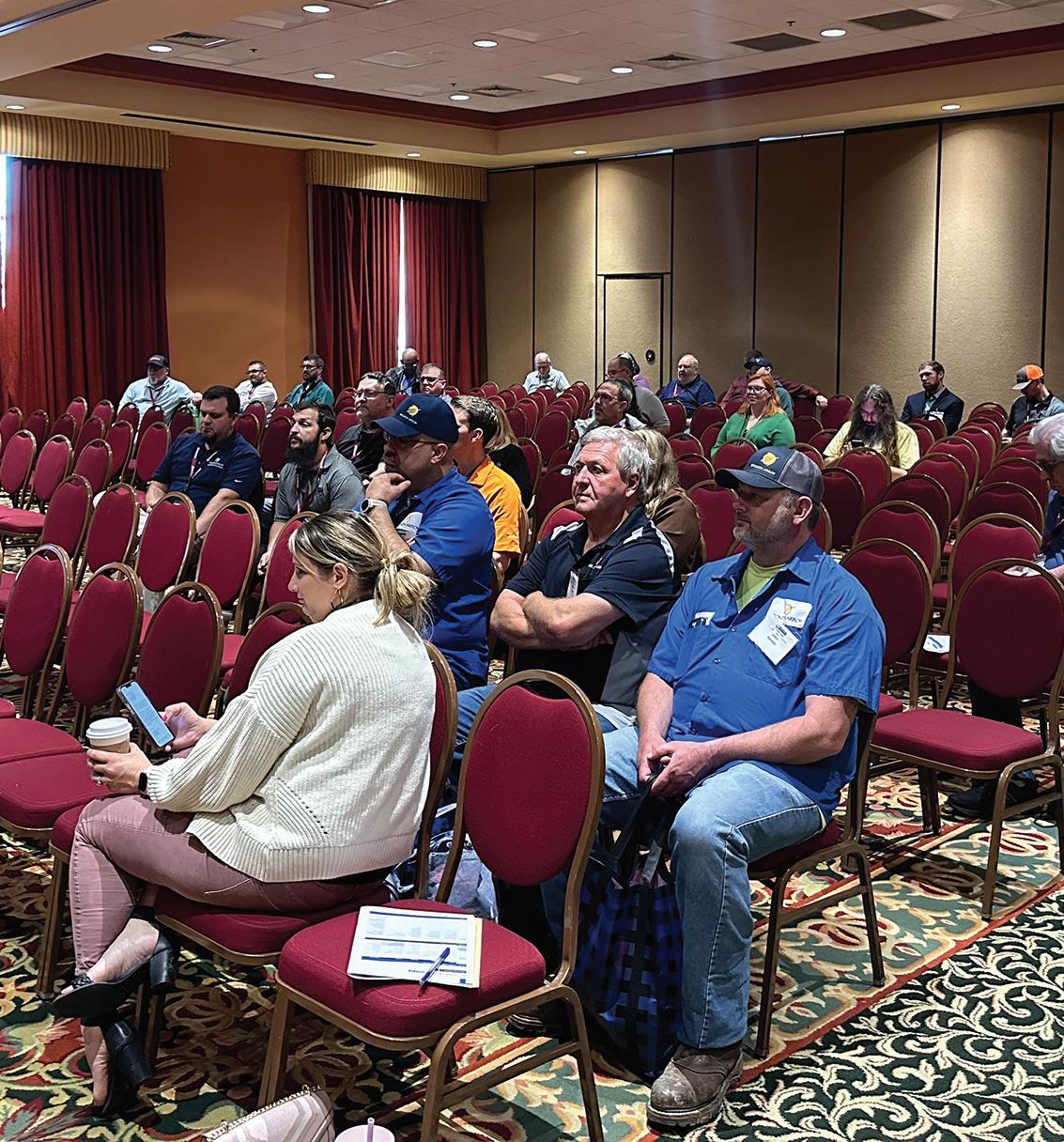
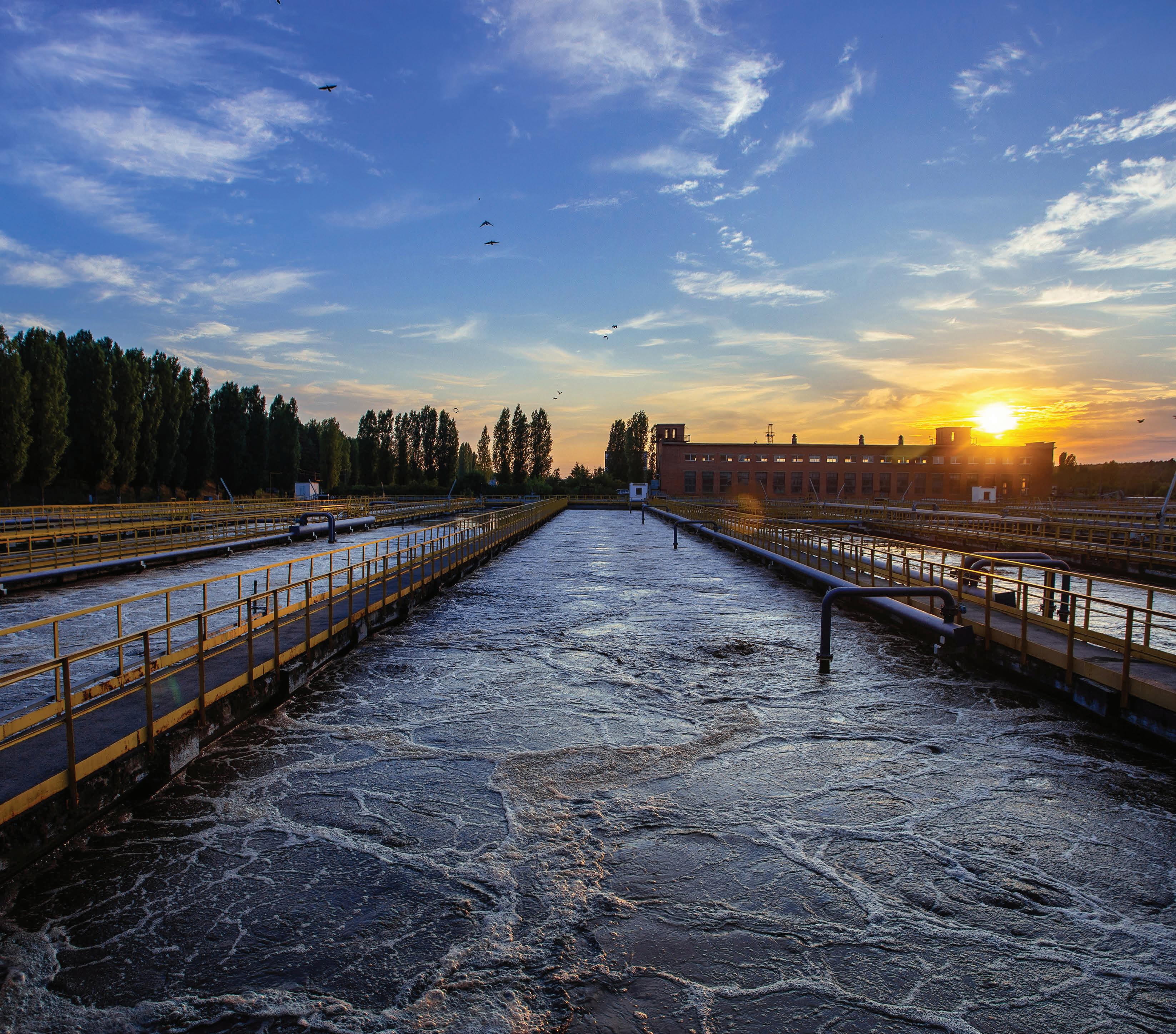
Introducing I-FLOAT, Carollo’s Inflatable Fast and Lightweight Off-gas Analysis Technology. Developed at Carollo’s Water Applied Research Center (Water ARC®), I-FLOAT is portable, easy to install, and covers a large surface area for accurate results. Plus, it delivers realtime data on greenhouse gases like methane and nitrous oxide – enabling decision-making that aligns with your sustainability goals. With I-FLOAT, you can monitor readings remotely and optimize aeration like never before.

800.523.5826 / carollo.com

In 1988, the Operations Challenge competition began with 22 teams.
This event is a skills competition for the wastewater industry. Four person teams pit their skills against other teams in five operations and maintenance focused events: pump maintenance, safety, laboratory, process control, and collection system. At WEFTEC ’24 in New Orleans, the field of competition was 56 teams in three divisions from six different counties. Oklahoma has never had a team compete at the national level. In past years we have had members participate at WEFTEC as judges and now it’s time for OWEA to move toward competing.
This year, at the 2025 Conference, we are hosting the Process Event and the Collection System Event for the first time. Recognizing that this is a new activity and there may be many questions, please reach out to the Competition Committee Chair, Curtis Madison at 405-628-4006, curtis.madison@inframark.com or John Bannen at 405-435-2806, john.bannen@stvinc.com if you need assistance or want to learn more about the OWEA Operations Challenge.
This event will consist of handwritten and computerized portions of the event. There will be a three-minute review period, followed immediately by the 30-minute competition. The test consists of short math, operational scenario questions, electronic
From treatment to reuse, we’ve specialized for 46 years in cutting-edge planning, design and construction managment. Count on us for support through the full project life cycle.
multiple-choice questions and computerized process simulation utilizing Hydromantis modeling software. The purpose of the Process Control event is to distinguish the relative process control skills of the teams. Unlike most test situations, teams will not be expected to complete all the questions.
This event simulates connecting a four-inch PVC lateral sewer to an eight-inch PVC sewer pipe; replacing a leaking section of existing eight-inch PVC sewer pipe while in service; and the construction of the Victaulic Pipe Tower per defined procedures.
There are numerous YouTube videos that are available and can be found with a simple search or by visiting the WEF Operations Challenge Team Resource Page at www.weftec.org/program/ exhibition/operations-challenge.
OWEA and the Competition Committee will consider adding Pump Maintenance, Safety, and Laboratory Operations Challenge events in the future. If you are interested in providing sponsorship or equipment for these events, please reach out to the Competition Committee Chair, Curtis Madison at 405-628-4006 or curtis.madison@inframark.com or John Bannen at 405-435-2806 or john.bannen@stvinc.com


PLANT OF THE YEAR –CATEGORY 1:
LOWER BIRD CREEK WWTP
Lower Bird Creek WWTP demonstrated a commitment to innovation and efficiency by using advanced technology for sustainable and reliable solutions.
The Lower Bird Creek Wastewater Treatment Plant (LBCWWTP) is designed for an average flow of 4 million gallons per day (MGD) and currently averages a discharge of 800,000 gallons per day (GPD). Embodying the OWEA principles of efficiency, innovation, and sustainability, LBCWWTP utilizes technology like Hach WIMS for automated reporting and a robust SCADA system for efficient operations. In 2024, LBCWWTP was recognized with its 14th NACWA Platinum Peak Performance Award for 14 years of zero violations of the OPDES permit. LBCWWTP has gone over nine years without a lost time injury, and all staff hold ODEQ wastewater operator licenses.
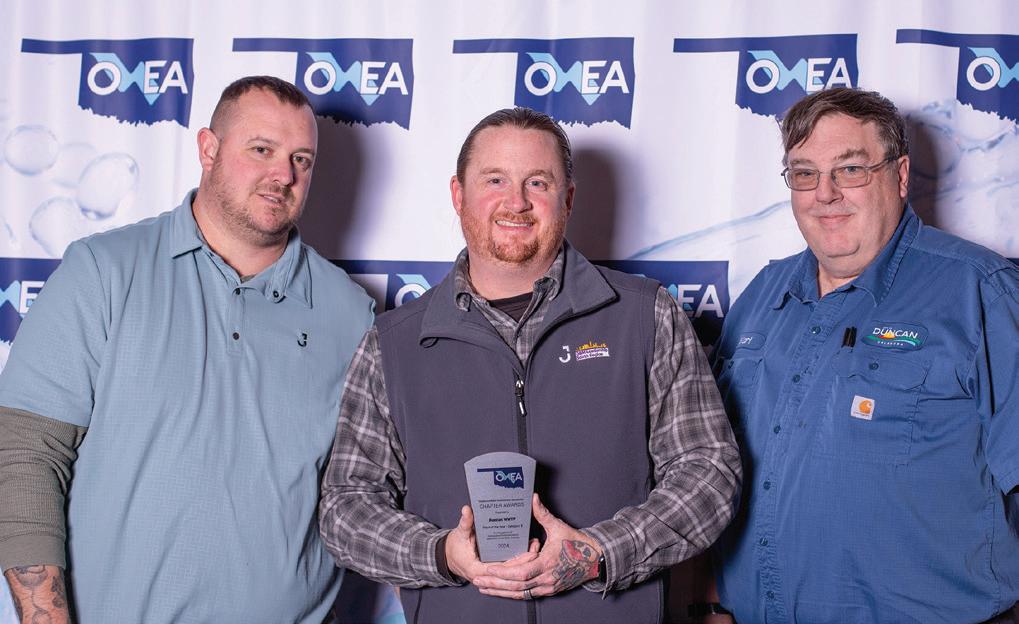
MUNICIPAL TREATMENT PLANT OF THE YEAR –
CATEGORY 2: DUNCAN WWTP
In the face of excessive rainfall and challenging conditions, the Duncan WWTP team’s resilience, safety, and cross-training expertise proved invaluable in maintaining operations.
The Duncan Wastewater Treatment Plant (WWTP) has a design capacity of 4.5 MGD with a peak flow of 8.35 MGD. Current average annual flows are 1.6 MGD. The Duncan WWTP six-person team showed unwavering dedication, advanced cross-training, and exceptional collaboration, combined with an outstanding safety and compliance record. After powerful storms left over 10 inches of rainfall in a few days that flooded equalization basins and maxed out the influent storage, the Duncan WWTP team provided immediate response to repair, recover, collaboration across regions, and manage overflow, all while maintaining zero effluent violations and avoiding
any safety incidents. The Duncan WWTP team demonstrated resilience under pressure, cross-training and operator expertise, safety and compliance, and a drive for continuous improvement.

Hefner WTP demonstrates a commitment to excellent water quality, public education, and continuous safety improvement. The Hefner Water Treatment Plant (WTP) is a lime-softening WTP averaging 42 MGD daily and rated at 100 MGD. Hefner WTP has demonstrated a commitment to excellence in water treatment, public health, and safety. Hefner WTP consistently upgrades its modern facility to provide continued compliance and meet water demands. Hefner WTP’s commitment to safety is evident in six years without a workplace injury and the continual advancement in training through ODEQ operations certification, including over 50% of operations staff with completion in at least a Level 1 OWEA maintenance technologist program. Additionally, the Hefner staff has prioritized public health and education by hosting over 50 plant tours within the last two years.
Paul Hendricks has been an Inframark operator at the Oklahoma City Chisholm Creek Wastewater Treatment Plant (WWTP) since June 2021. Over the past four years, Paul advanced from Operator to Lead Operator, demonstrating leadership skills and problem-solving abilities. Paul leads by fostering teamwork, encouraging growth, and mentoring new employees. He sets high standards for performance and a commitment to safety that enhances operational efficiency. Demonstrating his dedication to public education and awareness, Paul has provided facility tours for students enrolled in the University of Central Oklahoma’s Environmental Safety Curriculum and nearly 60 new hires.

YEAR:
Brandon Williams is a technician at Inframark who has demonstrated a dedication to improvement, community involvement, and commitment to excellence since 2017. With a collaborative spirit, Brandon successfully leads a department of technicians and helps the North Canadian WWTP exceed all permit and national regulations. His leadership approach includes setting high standards, collaborating cross-functionally, and having a passion to do the best job and constantly improve. Brandon’s dedication to improving his expertise is evident in his completion of 27 training courses and educational opportunities. Brandon received the 2019 OWPCC Instrumentation Technician of the Year Award. He is also a Navy veteran.

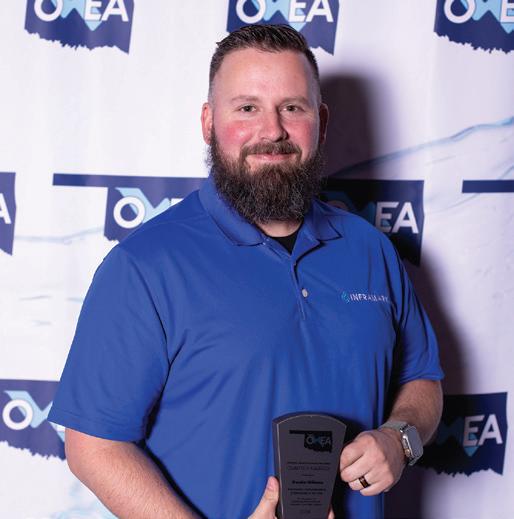
Driven by a passion for environmental advocacy and education, Emily Rowland serves as the OWEA Executive Board President. In addition to leading key initiatives for OWEA, Emily is also the Environmental Division Manager with the City of Broken Arrow. Emily has worked for the City of Broken Arrow for six years, beginning in 2018 as an Environmental Project Engineer. At 29 years old, Emily is the youngest Division Manager in the Engineering and Construction department. A member of the APWA, AWWA, and the SWAWWA, Emily actively collaborates with other organizations within the industry.

OF THE YEAR:
Brandon Butcher is a dedicated stormwater technician who has served the Tinker Air Force Base’s stormwater since February 2022. Brandon was promoted to the Collections & Distribution Crew Chief.
Brandon has demonstrated a commitment to safety and efficiency, performing tasks effectively without risking safety. Additionally, he exemplifies integrity by consistently following through on his commitments. Brandon continuously improves his professional development by increasing his licenses, obtaining certifications, and attending courses and conferences.
MAINTENANCE TECHNICIAN OF THE YEAR:
TRISTEN KELLEY
Working for Inframark since November 2022, Tristen Kelley is a technician who oversees maintenance at the North Canadian Wastewater Treatment Plant (WWTP) and the South Canadian WWTP. Recently, Tristen was promoted to a Level 3 Technician. Tristen strives for excellence and has helped improve efficiency at the South Canadian WWTP. Through his communication and leadership skills, he corrected deficiencies in the plant, minimized equipment downtime, and reduced emergencies. Additionally, Tristen demonstrates a commitment to continuous education through professional development courses. Tristen is a proud United States Marine.
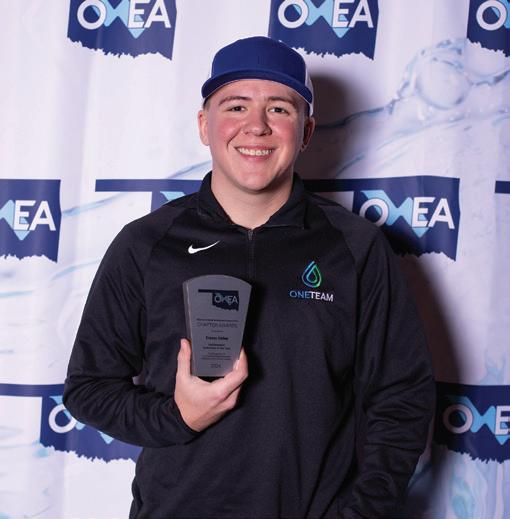
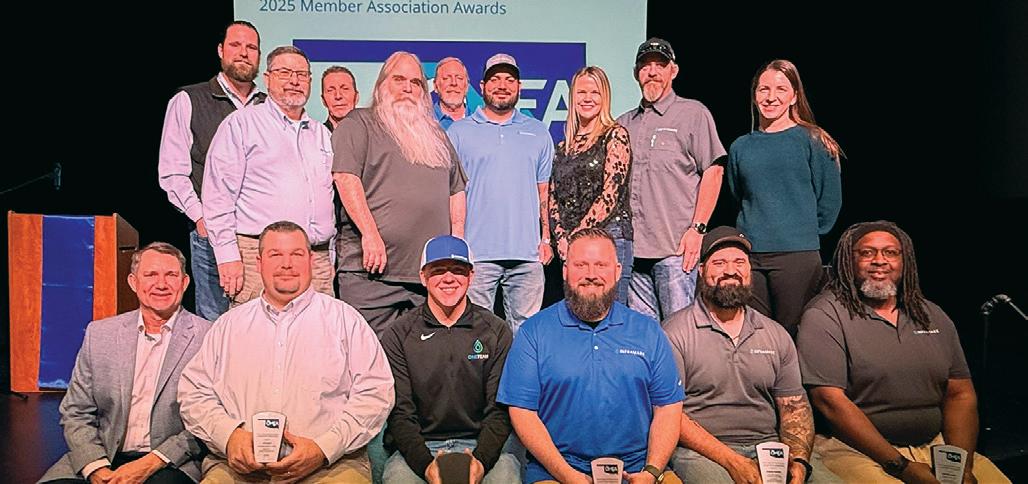
Inframark is a firm that specializes in contract operations and maintenance of water and wastewater facilities. Inframark demonstrates a commitment to its team by offering learning and development opportunities hosted through OWEA and WEF. Inframark encourages employees to join OWEA by funding the cost of memberships and allowing time during work to volunteer. Additionally, Inframark has encouraged technical and professional growth through training sponsorship and technical support, employee participation as judges in operational challenges, OWEA conference exhibition, operator certification hosting, and committee participation and leadership.
The Division of Environmental Resilience and Sustainability (DoERS) is dedicated to fostering a sustainable future for the City of Norman. DoERS plays a critical role in safeguarding public health, protecting environmental quality, and promoting sustainability. DoERS’ comprehensive approach to environmental sustainability has yielded positive impacts, including improved water quality, reduced environmental risks, enhanced community resilience, and increased public awareness and engagement in sustainable practices, demonstrating the division’s commitment to cutting-edge sustainability practices.


All grit removal systems are NOT created equal.


THE PROBLEM: Grit accumulation reduces tank and channel volumes and causes abrasive wear on equipment.
THE SOLUTION: Lakeside’s SpiraGrit® Vortex Grit Removal System
The Lakeside SpiraGrit® Vortex Grit Removal System is a flexible solution for removing grit from the wastewater treatment process. Its proven design features a relatively small footprint and provides efficient grit removal over a large flow range in both concrete structures and standalone stainless steel tanks.

Various grit pumping options — from flooded suction to topmounted self-priming — are available to meet your design requirements. We also offer a range of grit classifiers for grit dewatering and grit washers when additional organic removal for cleaner drier grit is required.

Coverage of PFAS is supported by Carollo.
The toxicity and widespread detectability of certain per- and poly-fluoroalkyl substances (PFAS) have raised concern about their potential health impacts or changes to water and wastewater practices in response. PFAS are commonly present in water, human blood, environmental samples, household products, and biosolids (Ducatman et al., 2022; Hu et al., 2019, 2016; Vedagiri et al., 2018; Zheng and Salamova, 2020).
California’s GeoTracker PFAS Map reports at least one type of PFAS has been detected in solids at 94% of the 156 water resource reclamation facilities (WRRFs) sampled (CWB, 2022). As part of their comprehensive PFAS strategy, the USEPA is conducting a risk assessment of two PFAS – perfluorooctanoic acid (PFOA) and perfluorosulfonic acid (PFOS) – in biosolids, to be completed in 2024.
The assessment will be the basis for any following federal regulation addressing
PFAS in biosolids for land application (USEPA, 2021).
Recent actions by the USEPA and state governments have raised concerns that future regulatory thresholds for PFOA and PFOS in biosolids could be low enough to cause widespread challenges to land application. In June 2022, the USEPA announced new health advisory levels (HALs) for PFOA and PFOS (USEPA, 2022). While these HALs are non-enforceable guidelines and specific to drinking water they were over 1000 times below the PFOA & PFOS HALs announced in 2016, and more than 100 times below lab detection limits.
Meanwhile, in April 2022, the state of Maine banned biosolids land application in response to PFAS concerns.
Several potential pathways exist for chemicals in biosolids to reach people or animals (image below), yet the actual health risk depends on the existence of these pathways, the chemical’s concentration in

biosolids, toxicity, and tendency to move through each pathway step.
To answer the many questions involved in comprehensive biosolids risk assessment, scientists and engineers continue to conduct extensive long-term research on the occurrence, transport, and fate of PFAS in biosolids and the agricultural environment.
This article is a brief state-of-the-science review of PFAS in biosolids. This information is important for:
• Understanding what upcoming regulations might be and their justification
• Advocating for balanced policies
• Getting a head start on PFAS source control, and
• Preparing contingencies for biosolids treatments if needed.
PFOA and PFOS have been linked to many adverse human health effects. A USEPA Science Advisory Board stated that PFOA and PFOS are likely associated with “liver disease, immune system dysfunction, serum lipid aberration, impaired fetal growth, and cancer,” (Science Advisory Board, 2022). Ducatman et al. (2022) found substantial scientific evidence for links between PFAS and immune suppression,

kidney cancer, diminished breastfeeding, high cholesterol, and altered liver enzymes. A meta-analysis of 24 human epidemiological studies concluded with over 99.9% confidence that higher alanine aminotransferase in serum was associated with PFOA and PFOS exposure. Alanine aminotransferase is an enzyme used as a biomarker for liver health.
For the June 2022 drinking water HALs, the EPA set guidance levels based on antibody response after tetanus and diphtheria vaccines (USEPA, 2022). These HALs were calculated based on a series of studies from children born at the same hospital in the Faroe Islands, where PFAS exposure is presumed to occur through diet, especially seafood (Budtz-Jørgensen and Grandjean, 2018; Grandjean et al., 2017b, 2017a, 2012). The HALs also factored in bioconcentration in the breastmilk of exposed mothers, since infants would be the key population affected by vaccine inhibition (Verner et al., 2016). Experts acknowledge the uncertainty in estimating any resulting disease incidence or mortality from PFAS impacts on the immune system.
Many studies have measured PFAS in biosolids and indicated that mean biosolids concentrations are often dominated by a few industrially impacted outliers. More recent studies found generally lower PFOA and PFOS concentrations in biosolids, suggesting industrial phaseouts in the 2000s are having beneficial downstream
impacts. On one hand, the monitoring data suggests PFOA or PFOS biosolids concentrations below 10 ppb are achievable through source control alone. On the other hand, some PFAS detection in biosolids is likely unavoidable due to the abundance of similar compounds being developed as replacements.
In 2020, California required WRRFs treating over 1 MGD to measure PFAS in influent, effluent, and biosolids. Based on data from 156 WRRFs (CWB, 2022), the majority of California biosolids results were equal to or below their reporting limits for PFOA and PFOS (8 ppb; Figure 2). Reported median biosolids concentrations were 1.7 ppb PFOA and 6.7 ppb PFOS when including values between the detection and reporting limits.
A meta-analysis of PFAS in biosolids in the USA found PFOA and PFOS data available through the year 2020 for 36 individual WRRFs (Thompson et al., 2022). The mean concentrations of PFOA and PFOS were 24±7 ppb and 233±107 ppb, respectively. Median PFOA and PFOS were much lower at 5.5 ppb and 59 ppb, respectively. Some of the biosolids sampled in that meta-analysis were collected as long ago as 1998, well before the industrial phaseout (Higgins et al., 2005).
Furthermore, the aggregated studies said that over 20% of the WRRFs had suspected industrial sources of PFAS; however, a much lower percentage of WRRFs likely have significant PFOA and PFOS industrial sources, especially in recent years. Omitting
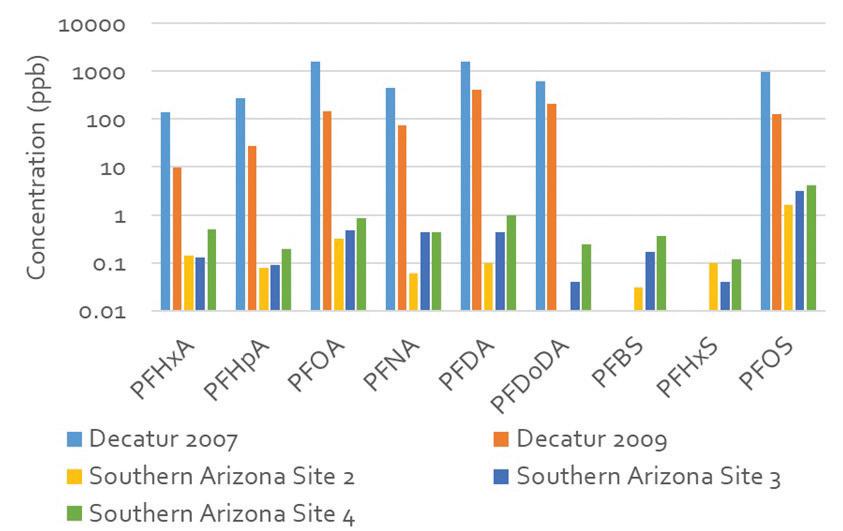
likely industrially impacted outliers, median PFOA and PFOS would have been 2.1 ppb and 31 ppb, respectively.
In 2018, Michigan’s sampling program of 42 WRRFs (EGLE, 2021) demonstrated six WRRFs were industrially impacted based on having biosolids PFOS concentrations over 150 ppb and a plausible source. These results reiterated the importance of source identification and control.
PFAS concentrations in land-applied soil largely depend upon the concentrations entering WRRFs and application rates. Several studies have looked at soils amended with land-applied biosolids from industrially impacted WRRFs versus non-industrially impacted biosolids. Two key takeaways are (1) PFAS do not degrade in soil under realistic conditions in a meaningful timeframe and (2) they can transport through the soil to lower depths depending upon PFAS chain length and soil properties (e.g., porosity, organic content).
Industrial PFAS sources in the WRRF collection systems lead to higher PFAS concentrations in land-applied biosolids. PFAS in land-applied biosolids from an industry-impacted WRRF in Alabama remained at double- to triple-digit ppb levels in the soils even five years after the PFAS source was eliminated (Figure 3; Washington et al., 2010). These concentrations in Alabama were

of California biosolids PFAS monitoring results for PFOA and PFOS. Values below their detection limit were assumed to be half their detection limit.

over 100 times higher than found in land-applied biosolids in Arizona with no industrial source (Pepper et al., (2021). Even without major industrial sources, Pepper et al. (2021) still found somewhat higher PFAS concentrations in soils amended with biosolids relative to unamended soils. Nonetheless, PFOA and PFOS concentrations were essentially attenuated to low single-digit ppb concentrations at 6-ft soil depths, suggesting long-chain PFAS including PFOS and PFOS have a little movement to deep groundwater (Pepper et al., 2021).
PFAS in the environment has a variety of potential pathways, including from soils to plants and earthworms, from plants to livestock and humans, and from contaminated meat and dairy products to humans. A major factor in PFAS fate in the environment is chain length. Several studies have shown long-chain PFAS (i.e., eight or more carbons) have higher concentrations at the soil surface, while short-chain PFAS can transport to significant depths in soils (Pepper et al., 2021; Sepulvado et al., 2011; John W. Washington et al., 2010). Washington et al. (2010) found long-chain PFAS like PFOA and PFOS dominated topsoil concentrations, but shorter-chain compounds like PFHxA, PFHpA, and PFHxS
“Source control is the most proven, cost-effective way to reduce PFAS concentrations in biosolids. Multiple Michigan WRRFs have successfully reduced biosolids PFOS concentrations by over 90% through source control (EGLE, 2021). ”
tended to increase with soil depth, likely due to their hydrophilicity.
Plant uptake studies have demonstrated PFAS bioaccumulation in a variety of crops ranging from grains like wheat, leafy vegetables like lettuce, and root vegetables like carrots and onions (Blaine et al., 2013; Liu et al., 2019). While long and short-chain PFAS can be taken up by plants, studies have demonstrated that shorter-chain PFAS are more likely to bioaccumulate in plants, likely due to their hydrophilicity allowing for transport to roots for uptake (Costello and Lee, 2020).
Several researchers have shown that beef and dairy cows are exposed to contaminated waters and feed bioaccumulate PFAS compounds (Lupton et al., 2022; Vestergren et al., 2013). Tissue samples from 180 cattle with long-term PFAS exposure found bioaccumulation of sulfonated PFAS including 56-96 ppb PFOS (Lupton et al., 2022). Kowalczyk et al. (2013) focused on the role of feed consumption in PFAS uptake and accumulation in dairy

cows. After being fed contaminated feed for 28 days, dairy cows secreted PFOS and PFHxS through the milk, and PFBS and PFOA accumulated in body tissues. A month after the feeding of contaminated feed was discontinued, PFOS continued to accumulate in cow muscle, and traces of PFBS were still found in dairy milk. Transference through the food chain will be an important part of the EPA’s risk assessment. Nonetheless, less intuitive pathways – namely children directly consuming land-applied biosolids – have been the regulatory driver for several metals in biosolids.
Source control is the most proven, cost-effective way to reduce PFAS concentrations in biosolids. Multiple Michigan WRRFs have successfully reduced biosolids PFOS concentrations by over 90% through source control (EGLE, 2021). Guidance on PFAS source control is available in other CWEA articles and in the forthcoming Water Research Foundation Project #5082 Investigation of Alternative Management Strategies to Prevent PFAS from Entering Drinking Water Supplies and Wastewater.
PFAS destruction in biosolids may be required if source control alone is not enough to comply with future regulations governing land application and landfilling is not feasible due to capacity constraints, greenhouse gas emissions concerns, public pressure, or regulations placed upon the landfills. To minimize long-term risk, utilities may seek to mineralize PFAS, i.e., destroy it completely to carbon dioxide and hydrofluoric acid (HF).

Conventional biological processes like aerobic or anaerobic digestion or pre-digestion treatments like thermal hydrolysis have shown no impact on PFAS destruction, though they may transform PFAS precursors into other PFAS compounds. While long-chain PFAS can decompose at temperatures over 400 °C, complete mineralization does not occur until temperatures exceed 1,000 °C (Zhang et al., 2023).
High-temperature treatment technologies exist at the commercial (incineration, pyrolysis, gasification) and demonstration scales (supercritical water oxidation (SCWO), hydrothermal liquefaction (HTL)) that show potential for partial or complete PFAS destruction. Temperatures over 1,000 °C can be achieved and maintained with some incineration processes, although conventional sewage sludge incinerators do not operate at those temperatures.
Pyrolysis and gasification have shown high rates of removal, though they generally operate at temperatures lower than incineration. One pyrolysis study removed 9 PFAS (including PFOA and PFOS) in biosolids to non-detection in biochar with 500-600°C (Kundu et al., 2021). Another biosolids pyrolysis study found 94% removal of 18 PFAS at 650 °C (Wang et al., 2022). Potential emission of PFAS or their thermal transformation products to air is a key consideration and an ongoing research area for these thermal technologies (Wang et al., 2020). Since exhaust may still contain volatilized PFAS, they require high-temperature regenerative thermal oxidizers for full destruction and scrubbers for produced HF, which is already a regulated compound.
Other demonstration-scale technologies like HTL and SCWO can treat biosolids at somewhat lower temperatures but higher pressures. Great Lakes Water Authority is testing PFAS destruction with HTL at a pilot scale. A SCWO demonstration unit is being manufactured for installation at the Orange County Sanitation Districts plant, scheduled for startup later this year.
Due to the relative newness of these high-temperature systems, questions remain regarding capital and operating costs, permitting, long-term operations and maintenance, scalability, reliability, and overall system sophistication. All of these characteristics are currently being studied and will continue to be assessed as more installations and operating experience are gained. Meanwhile, regulators and researchers continue to study the fate, transport, and risks imposed by PFAS in biosolids with a near-term focus on reducing PFAS use in commercial and industrial products.
We would like to thank Trinity River Authority, who funded a detailed literature review from which this article was derived.
1 Blaine, A.C., Rich, C.D., Hundal, L.S., Lau, C., Mills, M.A., Harris, K.M., Higgins, C.P., 2013. Uptake of perfluoroalkyl acids into edible crops via land applied biosolids: Field and greenhouse studies. Environ. Sci. Technol. 47, 14062–14069. https://doi. org/10.1021/es403094q
2 Budtz-Jørgensen, E., Grandjean, P., 2018. Application of benchmark analysis for mixed contaminant exposures: Mutual adjustment of perfluoroalkylate substances associated with immunotoxicity. PLoS One 13, 1–14. https://doi.org/10.1371/journal. pone.0205388
3 Costello, M.C.S., Lee, L.S., 2020. Sources, Fate, and Plant Uptake in Agricultural Systems of Per- and Polyfluoroalkyl Substances. Curr. Pollut. Reports. https:// doi.org/10.1007/s40726-020-00168-y
4 Custer, C.M., Custer, T.W., Dummer, P.M., Etterson, M.A., Thogmartin, W.E., Wu, Q., Kannan, K., Trowbridge, A., McKann, P.C., 2014. Exposure and effects of perfluoroalkyl substances in tree swallows nesting in Minnesota and Wisconsin, USA. Arch. Environ. Contam. Toxicol. 66, 120–138. https://doi. org/10.1007/s00244-013-9934- 0
5 CWB, 2022. GeoTracker PFAS Map [WWW Document]. Calif. Water Boards. URL https://geotracker.waterboards.ca.gov/ map/pfas_map (accessed 10.31.22).
6 Ducatman, A., Lapier, J., Fuoco, R., Dewitt, J.C., 2022. Official health communications are failing PFAScontaminated communities. Environ. Heal. 21, 1–18. https://doi.org/10.1186/ s12940-022-00857-9
7 EGLE, 2021. Land Application of Biosolids Containing PFAS: Interim Strategy. Michigan Department of Environment, Great Lakes, and Energy, Lansing, MI, USA.
8 Grandjean, P., Andersen, E.W., BudtzJorgensen, E., Nielsen, F., Molbak, K., Weihe, P., Heilmann, C., 2012. Serum Vaccine Antibody Concentrations in Children Exposed to Perfluorinated Compounds. JAMA 307, 391–397.
9 Grandjean, P., Heilmann, C., Weihe, P., Nielsen, F., Mogensen, U.B., BudtzJørgensen, E., 2017a. Serum vaccine antibody concentrations in adolescents exposed to perfluorinated compounds. Environ. Health Perspect. 125, 1–7. https:// doi.org/10.1289/EHP275
10 Grandjean, P., Heilmann, C., Weihe, P., Nielsen, F., Timmermann, A., Clinic, P., Islands, F., 2017b. Estimated exposures to perfluorinated compounds in infancy predict attenuated vaccine antibody concentrations at age 5 years. J. Immunotoxicol. 14, 188–195. https:// doi.org/10.1080/1547691X.2017.1360968. Estimated
11 Groffen, T., Lasters, R., Lopez-Antia, A., Prinsen, E., Bervoets, L., Eens, M., 2019. Limited reproductive impairment in a passerine bird species exposed along a perfluoroalkyl acid (PFAA) pollution gradient. Sci. Total Environ. 652, 718–728. https://doi.org/10.1016/j. scitotenv.2018.10.273
12 Higgins, C.P., Field, J.A., Criddle, C.S., Luthy, R.G., 2005. Quantitative determination of perfluorochemicals in sediments and domestic sludge. Environ. Sci. Technol. 39, 3946–3956. https://doi. org/10.1021/es048245p

13 Hu, X.C., Andrews, D.Q., Lindstrom, A.B., Bruton, T.A., Schaider, L.A., Grandjean, P., Lohmann, R., Carignan, C.C., Blum, A., Balan, S.A., Higgins, C.P., Sunderland, E.M., 2016. Detection of Poly- and Perfluoroalkyl Substances (PFASs) in U.S. Drinking Water Linked to Industrial Sites, Military Fire Training Areas, and Wastewater Treatment Plants. Environ. Sci. Technol. Lett. 3, 344–350. https://doi.org/10.1021/acs. estlett.6b00260
14 Hu, X.C., Tokranov, A.K., Liddie, J., Zhang, X., Grandjean, P., Hart, J.E., Laden, F., Sun, Q., Yeung, L.W.Y., Sunderland, E.M., 2019. Tap water contributions to plasma concentrations of poly- and perfluoroalkyl substances (PFAS) in a nationwide prospective cohort of U.S. women. Environ. Health Perspect. 127, 1–11. https://doi.org/10.1289/EHP4093
15 Kowalczyk, J., Ehlers, S., Oberhausen, A., Tischer, M., Fürst, P., Schaff t, H., Lahrssen-Wiederholt, M., 2013. Absorption, distribution, and milk secretion of the per-fluoroalkyl acids PFBS, PFHxS, PFOS, and PFOA by dairy cows fed naturally contaminated feed. J. Agric. Food Chem. 61, 2903–2912.
16 Kundu, S., Patel, S., Halder, P., Patel, T., Hedayati Marzbali, M., Pramanik, B.K., Paz-Ferreiro, J., De Figueiredo, C.C., Bergmann, D., Surapaneni, A., Megharaj, M., Shah, K., 2021. Removal of PFASs from biosolids using a semi-pilot scale pyrolysis reactor and the application of biosolids-derived biochar for the removal of PFASs from contaminated water. Environ. Sci. Water Res. Technol. 7, 638–649. https://doi.org/10.1039/ d0ew00763c
17 Liu, Z., Lu, Y., Song, X., Jones, K., Sweetman, A.J., Johnson, A.C., Zhang, M., Lu, X., Su, C., 2019. Multiple crop bioaccumulation and human exposure of perfluoroalkyl substances around a mega fluorochemical industrial park, China: Implication for planting optimization and food safety. Environ. Int. 127, 671–684. https://doi.org/10.1016/j. envint.2019.04.008
18 Lupton, S.J., Smith, D.J., Scholljegerdes, E., Ivey, S., Young, W., Genualdi, S., Dejager, L., Snyder, A., Esteban, E., Johnston, J.J., 2022. Plasma and Skin Per- and Polyfluoroalkyl Substance (PFAS) Levels in Dairy Cattle with Lifetime Exposures to PFAS-Contaminated Drinking Water and Feed. J. Agric. Food Chem. https://doi.org/10.1021/acs. jafc.2c06620
19 Pepper, I.L., Brusseau, M.L., Prevatt, F.J., Escobar, B.A., 2021. Incidence of PFAS in soil following long-term application of class B biosolids. Sci. Total Environ. 793, 148449. https://doi.org/10.1016/j. scitotenv.2021.148449
20 Science Advisory Board, 2022. Review of EPA’s Analyses to Support EPA’s National Primary Drinking Water Rulemaking for PFAS [WWW Document]. US Environ. Prot. Agency. URL https://sab.epa.gov/ords/ sab/f?p=114:18:1523866098321:::RP,18:P18_ ID:2601#report (accessed 9.18.22).
21 Sepulvado, J.G., Blaine, A.C., Hundal, L.S., Higgins, C.P., 2011. Occurrence and fate of perfluorochemicals in soil following the land application of municipal biosolids. Environ. Sci. Technol. 45, 8106–8112. https://doi. org/10.1021/es103903d
22 Thompson, K.A., Mortazavian, S., Gonzalez, D.J., Bott, C., Hooper, J., Schaefer, C.E., Dickenson, E.R.V. V, 2022. Poly- and Perfluoroalkyl Substances in Municipal Wastewater Treatment Plants in the United States: Seasonal Patterns and MetaAnalysis of Long-term Trends and Average Concentrations. ACS ES&T Water 2, 690–700. https://doi.org/10.1021/acsestwater.1c00377
23 USEPA, 2022. Technical Fact Sheet: Drinking Water Health Advisories for Four PFAS (PFOA, PFOS, GenX chemicals, and PFBS). US Environmental Protection Agency, Washington, DC, USA.
24 USEPA, 2021. PFAS Strategic Roadmap: EPA’s Commitments to Action 2021-2024. US Environmental Protection Agency, Washington, DC, USA.
25 Vedagiri, U.K., Anderson, R.H., Loso, H.M., Schwach, C.M., 2018. Ambient levels of PFOS and PFOA in multiple environmental media. Remediation 28, 9–51. https://doi. org/10.1002/rem.21548
26 Verner, M.A., Ngueta, G., Jensen, E.T., Fromme, H., Völkel, W., Nygaard, U.C., Granum, B., Longnecker, M.P., 2016. A Simple Pharmacokinetic Model of Prenatal and Postnatal Exposure to Perfluoroalkyl Substances (PFASs). Environ. Sci. Technol. 50, 978–986. https://doi.org/10.1021/acs.est.5b04399
27 Vestergren, R., Orata, F., Berger, U., Cousins, I.T., 2013. Bioaccumulation of perfluoroalkyl acids in dairy cows in a naturally contaminated environment. Environ. Sci. Pollut. Res. 20, 7959–7969.
28 Wang, B., Yao, Y., Chen, H., Chang, S., Tian, Y., Sun, H., 2020. Per- and polyfluoroalkyl substances and the contribution of unknown precursors and short-chain (C2–C3) perfluoroalkyl carboxylic acids at solid waste disposal facilities. Sci. Total Environ. 705. https://doi.org/10.1016/j. scitotenv.2019.135832
29 Washington, John W, Yoo, H., Ellington, J.J., Jenkins, T.M., Libelo, E.L., 2010. Concentrations, distribution, and persistence of perfluoroalkylates in sludge-applied soils near Decatur, Alabama, USA. Environ. Sci. Technol. 44, 8390–8396. https://doi.org/10.1021/ es1003846
30 Washington, John W., Yoo, H., Ellington, J.J., Jenkins, T.M., Libelo, E.L., 2010. Concentrations, distribution, and persistence of perfluoroalkylates in sludge-applied soils near Decatur, Alabama, USA. Environ. Sci. Technol. 44, 8390–8396. https://doi.org/10.1021/ es1003846
31 Zhang, J., Gao, L., Bergmann, D., Bulatovic, T., Surapaneni, A., Gray, S., 2023. Review of influence of critical operation conditions on by-product/intermediate formation during thermal destruction of PFAS in solid/biosolids. Sci. Total Environ. https:// doi.org/10.1016/j.scitotenv.2022.158796
32 Zheng, G., Salamova, A., 2020. Are melamine and its derivatives the alternatives for per- And poly-fluoroalkyl substance (PFAS) fabric treatments in infant clothes? Environ. Sci. Technol. 54, 10207–10216. https://doi.org/10.1021/acs. est.0c03035

John W. Bannen, STV Sr. Water/Wastewater Engineering Operations Manager/Technical Advisor
Recently when I have talked with our young professionals regarding PFAS I have categorized it as a focus that will likely impact their whole careers. I look back on my own time in the industry starting in 1991 and see how regulations for disinfectants and disinfection byproducts, the lead and copper rule, disposal of sewage sludge (biosolids), and stormwater management shaped much of my career. So now we enter our PFAS ERA.
The City of Oklahoma City has been sampling for PFAS in the wastewater since 2022 to determine the potential impact on the Utilities Department and specifically the Wastewater Quality operations. The Department’s source characterization plan and initial findings were presented at the 2024 OKAPWA/OWEA Annual Conference. Sampling of the POTW influent, effluent, and biosolids was paired with sampling at lift stations throughout the system. Additionally, sampling at pure domestic confluent points and presumed PFAS-contributing sources was completed to establish baseline conditions.
Wastewater Quality then worked with the GIS/Mapping division of the Department to create a Power BI dashboard to assist in the evaluation of data and determine future sample points. The sampling was conducted quarterly and was funded through an SRF grant with 100% loan forgiveness. Knowing the magnitude of
“I look back on my own time in the industry starting in 1991 and see how regulations for disinfectants and disinfection byproducts, the lead and copper rule, disposal of sewage sludge (biosolids), and stormwater management shaped much of my career. So now we enter our PFAS ERA.”
the PFAS issue will allow the city to plan and prepare for what is an uncertain regulatory future.
Making data-driven decisions is a foundational element of what we do in the wastewater industry. As the EPA continues to work through the PFAS Roadmap we must be vigilant in our preparation for future treatment and mitigation efforts to remove or destroy the PFAS in the waste stream. The call to action may be delayed until regulations have been promulgated but there is a vast availability of training and educational opportunities, I would like to share my experience with two such events.
The following are what I felt were insights and thoughtprovoking items for us to consider as our industry evolves from addressing PFAS in water treatment to wastewater treatment and biosolids at two training events I attended.
This fall I have had the opportunity to participate and attend two substantial PFAS trainings. First, I attended the PFAS Treatment USA 2024 summit in Torrance, CA, and was impressed by the diversity of the presentations over the two-day conference. The organizers made a conscious effort in the selection of speakers to create a broad range of topics touching the water industry regarding PFAS. And, second, the Center for Scientific Evidence in Public Issues (EPI) put on a two-part webinar focused on Land Applied Biosolids and PFAS Exposure, the link to the webinar is at the end of this article. This webinar highlighted three organizations’ research efforts in addressing elements of PFAS in biosolids.
In Torrance, the spectrum of speakers varied from engineers and water technology manufacturers to environmental scientists, lawyers, and public information officers. The panel discussions on treatment technologies and presentations on case studies involving treatment pilots were useful in identifying existing gaps in our potential solutions as they may be applied to wastewater. There remain significant questions to be answered and like all water and wastewater treatment, there is no one size fits all.
1. Where will there be regulations affecting wastewater POTWs? At the influent, effluent, or biosolids, what PFAS variations will be identified and at what levels?

“Being prepared for PFAS treatment in wastewater and biosolids involves staying ahead of emerging regulations, technological advancements, and ongoing research. This approach can help ensure compliance, protect the environment, and improve operational efficiency.”
2. Disposal or destruction? “Forever chemicals” are not truly “forever” if destruction is defined as mineralization and all that remains is free fluoride and carbon.
3. How will we account for the transformation of precursors in the treatment process and if we apply treatment will we be able to successfully calculate a mass balance on the PFAS reduction?
4. Is soil stabilization an acceptable remediation for existing land application sites?
The EPI Center webinar was filled with soil and biosolids research that has been occurring that will likely support the scientific basis for any biosolids regulations. As it is thought that the states will continue to set regulations for biosolids treatment and disposal the presentation given by Dr. Ian Pepper from the University of Arizona discussed a national collaborative research project the University has been conducting. 23 sites across 17 states from coast to coast with a diversity of climate, soil conditions, and depth to groundwater were part of the data set. Each of these sites had biosolids applied for more than 10 years. One of the biggest impacts of this study is the information is being used to revise the EPA Soil Screening Level (SSL) to account for the potential for adsorption of PFAS at the air-water interface.
One of the first states to prohibit the disposal of biosolids through land applications for beneficial agricultural use was Maine. Andrew Smith, SM, ScD who is the State Toxicologist with the Maine Center for Disease Control and Prevention presented on Agricultural Ecosystems impacted by PFAS-contaminated biosolids. The genesis for many of Maine’s actions was the discovery of PFAS in milk and so Maine worked to develop a Milk Action Level for PFAS. Study plots were developed to look at PFAS uptake rates in plants to gather data on grazing, silage, and snaplage. One of the encouraging points in this presentation was the depuration of PFOS in dairy herds over three years. The continuation of their research is now moving to beef cattle and poultry to help with farm management practices and data has also been collected on wildlife, specifically deer and turkey, to see if these animals being harvested have been impacted by the fields containing PFOS. Maine has developed advisory levels for #meals/month or #meals/year depending on the concentration of PFOS in the deer or turkey meat.
The final presentation was from Mohamed Ateia Ibrahim, PhD of the US EPA Office of R&D on PFAS Detection. This part of the webinar was a review of the currently approved technologies, and the limitations of current analytical testing equipment with an emphasis on understanding the specific species of PFAS you may be looking for vs. broad-spectrum analysis. An in-depth look at
Total Oxidizable Precursor (TOP) Assay was presented as a current project the R&D office is undertaking.
The link for all three presentations is below and I highly recommend following the continuing evolution of PFAS science that will be the foundation for regulations we will be seeing in the coming years.
Land-applied biosolids and PFAS exposure | American Association for the Advancement of Science (AAAS) (www.aaas.org/events/land-applied-biosolids-and-pfas-exposure).
Being prepared for PFAS treatment in wastewater and biosolids involves staying ahead of emerging regulations, technological advancements, and ongoing research. This approach can help ensure compliance, protect the environment, and improve operational efficiency.





For over 50 years, trust has been the cornerstone of Newman Regency Group's partnerships with the water and wastewater community. Our municipal and industrial clients know that the products we recommend will be the right t for each application because rst and foremost we are engineers who draw upon decades of individual, real-world experience.
We are commi ed to providing our customers with timely professional service and maintenance support.
Oklahoma O ice: 3030 NW, Expressway, Suite 300, Oklahoma City, OK 73020
Greg Stone: Capital/Engineered Sales • Cell: (405) 640-3314
• Email: gstone@newmanregency.com
Cory Flindt: A ermarket/Plant Level Sales • Cell: (918) 237-1266
• Email: cflindt@newmanregency.com

Classes Start at 8:30 am and Ends at 12:30 pm
March 25 Northeast Tech – Afton Campus, 19901 S Highway 69, Afton, OK 74331
April 8 Kiamichi Tech – Hugo Campus, 107 S. 15th St, Hugo, OK 74743
Dates










Oklahoma WEA – April 2-4, 2025 (Oklahoma City, OK)

New England WEA – April 30-May 2, 2025 (Salem, MA)


California WEA – June 4-6, 2025 (Palm Springs, CA)

The Water Environment Federation Member Association Exchange (WEFMAX) is an annual program of events jointly hosted with Member Associations to provide a forum for members from across the Federation to build synergy, energy, and momentum for a better water future. The events offer MA leaders and volunteers a forum to learn what is new from WEF and provide an ongoing opportunity to share MA successes and lessons learned. This year, WEFMAX will be held in Oklahoma City, OK, Salem, MA, and Palm Springs, CA. Space is limited, so sign up early!
Why attend? Engage with MA Leaders of today and tomorrow! Help chart the future of the Federation! Exchange lessons learned from other MAs! Collaborate and share ideas! Grow your network of water professionals! Help build a life free of water challenges—register today!
SPACE IS LIMITED! For more information visit: https://www.wef.org/membership-community/membership-center/wef-member-associations/Wefmax/
Locations & Dates:
• Oklahoma WEA
April 2-4, 2025 (Oklahoma City, OK) Register: https://www. surveymonkey.com/r/OK2025

• New England WEA
April 30-May 2, 2025 (Salem, MA)
Register: https://www. surveymonkey.com/r/SALEM25

• California WEA
June 4-6, 2025 (Palm Springs, CA)
Register: https://www. surveymonkey.com/r/2025CA
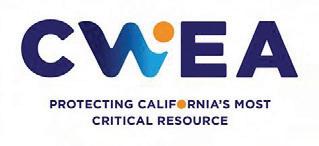





The Splash is made possible by the companies below who convey their important messages on our pages. We thank them for their support of OWEA and its publication and encourage you to contact them when making your purchasing decisions. To make it easier to contact these companies, we have included the page number of their advertisement, their phone number, and, where applicable, their website.



